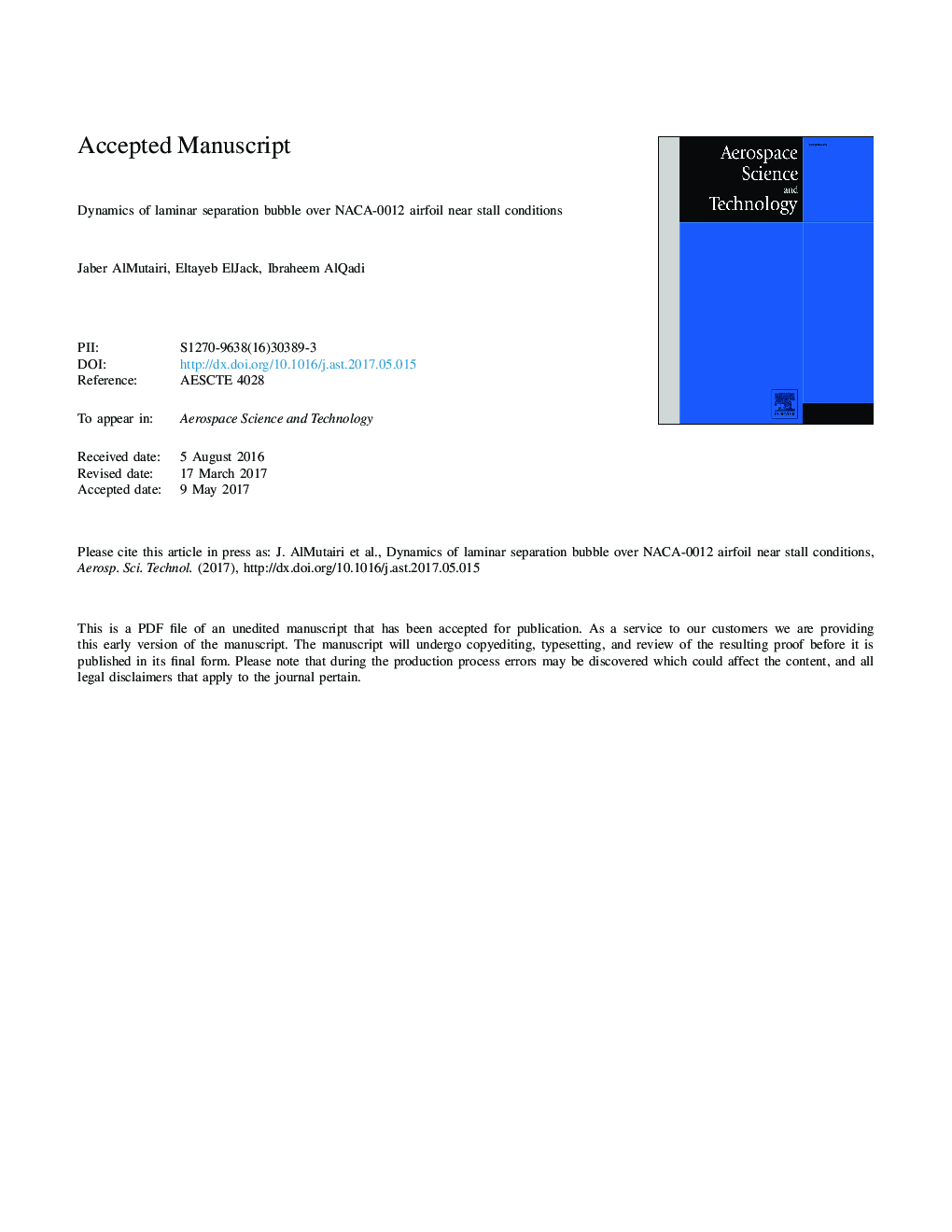| Article ID | Journal | Published Year | Pages | File Type |
|---|---|---|---|---|
| 5472905 | Aerospace Science and Technology | 2017 | 31 Pages |
Abstract
In this paper, we investigated the dynamics of laminar separation bubble over an airfoil near stall conditions. Large eddy simulation of flow around NACA-0012 airfoil was conducted at an angle of attack α=11.5â for a Reynolds number Rec=1.3Ã105 and Mach number Mâ=0.4. A self-sustained low-frequency flow oscillation was observed and its life cycle was described and analyzed. The computed Strouhal number of the oscillation was in good agreement with the experimental data. The flow oscillation was due to quasi-periodic bursting and reforming of the laminar separation bubble. The size of the computed bubble was twice that of the experiment and resulted in 19% difference between the computed and the experimental lift coefficients. The average of the maximum reverse velocity percentage inside the bubble, during attached phase, was 23.4%. The characteristics of the transition in the separated shear layer changed through the low-frequency cycle in which the turbulent kinetic energy was maximum when the bubble is at its shortest length. Dynamic mode decomposition analysis of the computed flow identified two dominant modes; the low-frequency oscillation mode and a high frequency mode representing trailing-edge shedding. The reconstructed flow of the DMD modes produced two distinct events, i.e., (1) fully separated flow with intense shedding at the trailing-edge and (2) a fully attached flow with no apparent vortex shedding at the trailing-edge. The DMD results suggest a critical role of acoustic feedback from the trailing edge in promoting earlier transition and forcing the separated flow to reattach.
Related Topics
Physical Sciences and Engineering
Engineering
Aerospace Engineering
Authors
Jaber AlMutairi, Eltayeb ElJack, Ibraheem AlQadi,
